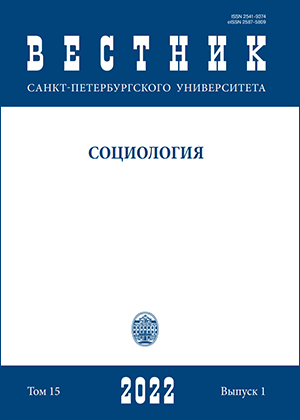Транснациональное онлайн-образование и цифровое неравенство: проблемы педагогического дизайна
DOI:
https://doi.org/10.21638/spbu12.2022.105Аннотация
О цифровизации образования часто говорится скорее как о катализаторе общественного прогресса, нежели как о явлении, порождающем в обществе цифровые барьеры. В этой связи в статье рассматривается проблема цифрового барьера и то, как она может влиять на качество обучения студентов в формате транснационального онлайнобразования, ставшего особенно востребованным в период пандемии коронавируса. За методологическую основу статьи взята модель «стека цифрового неравенства», с помощью которой показано, как каждый уровень «стека» — физический доступ к информационно-коммуникационным технологиям; цифровые навыки и компетенции; цели и мотивация использования цифровых технологий — может влиять на обучение студентов, особенно когда оно проходит полностью дистанционно с использованием цифровых технологий. Статья расширяет границы существующих исследований в области цифрового неравенства в высшем образовании в следующих трех направлениях: уточняет уровни и аспекты цифрового неравенства и пути его воздействия на опыт онлайн-обучения; обращает внимание на то, как педагогический дизайн может способствовать преодолению сложностей, с которыми студенты сталкиваются вследствие цифрового неравенства, и предлагает практическую модель педагогического дизайна в виде перечня вспомогательных вопросов для выявления и минимизации влияния цифрового неравенства на онлайн-обучение. В статье также представлены некоторые критические замечания в отношении концепции цифрового барьера, которые стоит иметь в виду при разработке и реализации онлайн-программ и курсов. Статья может быть интересна тем образовательным организациям, которые планируют участвовать в транснациональном онлайн-образовании.
Ключевые слова:
цифровой барьер, стек цифрового неравенства, транснациональное образование, онлайн-обучение, педагогический дизайн
Скачивания
Библиографические ссылки
*Meta признана экстремистской организацией в РФ.
Загрузки
Опубликован
Как цитировать
Выпуск
Раздел
Лицензия
Статьи журнала «Вестник Санкт-Петербургского университета. Социология» находятся в открытом доступе и распространяются в соответствии с условиями Лицензионного Договора с Санкт-Петербургским государственным университетом, который бесплатно предоставляет авторам неограниченное распространение и самостоятельное архивирование.




